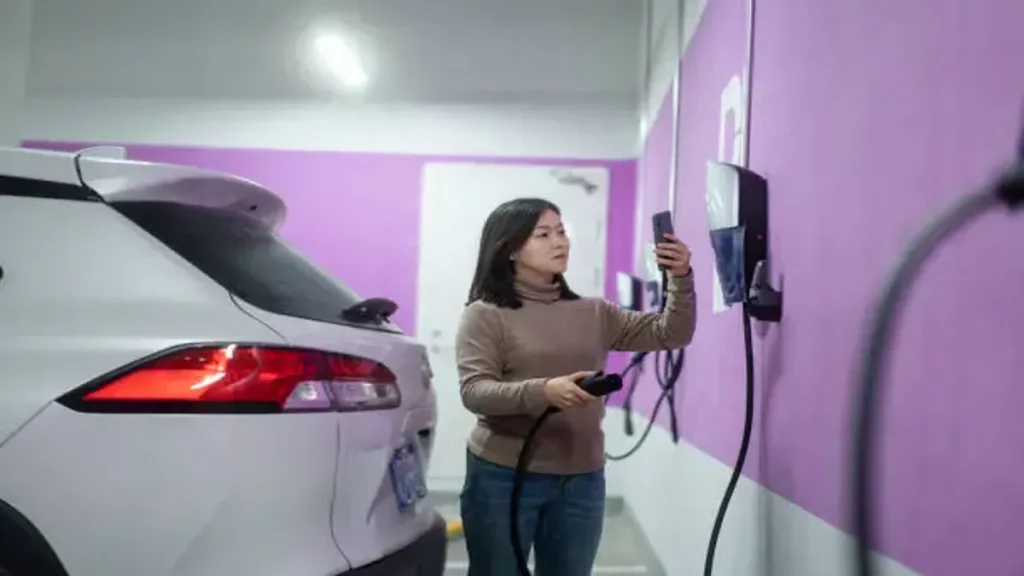Installing an electric vehicle (EV) charger at home brings a new level of convenience to owning an electric car. However, once the installation is complete, the real responsibility begins—ensuring that your EV charger remains safe, efficient, and durable over time. Without regular maintenance, even the highest-quality charger can underperform or degrade, leading to costly repairs or replacements. Fortunately, taking care of your EV charger doesn’t require technical knowledge—just a proactive mindset and a few consistent habits. We will explore how homeowners can preserve the functionality of their EV charging system with practical steps that prevent avoidable wear and promote long-term performance.
Simple Ways to Maintain Your EV Charger and Maximize Its Lifespan
- Inspect the Charging Cable Regularly
One of the most vulnerable parts of your EV charger is the charging cable. This component experiences the most handling, being bent, plugged, and unplugged daily. Over time, wear and tear can compromise its insulation or internal wiring. Whether you’ve recently completed an electric car home charging installation or have had your system for years, it’s essential to make it a routine to visually inspect the cable at least once a week or every other week. Look for frayed spots, exposed wires, or kinks that could signal stress on the cable.
Also, avoid wrapping it too tightly around the unit, which can damage the internal conductors. Instead, use the holder or hook often provided by installers to store it with minimal strain. Keeping the cable off the ground when not in use prevents water exposure and tripping hazards. If the cable appears discolored or emits a burnt smell, stop using it immediately and consult a certified electrician or the original installer for assessment. Keeping your charging cable in good condition helps avoid charging inefficiencies or, worse, electrical hazards.
- Keep the Charger Unit Clean and Dry
The charger enclosure is designed to withstand outdoor elements, especially if rated for exterior use. Still, regular cleaning and protection from extreme conditions can go a long way. Dust, grime, or residue from nearby landscaping or construction can accumulate on the charger and its vents, potentially obstructing airflow or impacting heat dissipation. To clean your unit, simply wipe it down with a soft, damp cloth once a month—avoid using solvents or harsh cleaners, as they can damage the casing. If your charger is installed outdoors, ensure that the surrounding drainage is clear and that no water pools at the base after rainfall. If the unit is covered in snow or ice, let it melt naturally or gently remove it without using sharp tools that could damage the casing. For those in coastal or high-humidity areas, inspect for any signs of corrosion or salt build-up. Taking a few minutes to care for the physical unit each month can significantly extend its longevity.
- Monitor Charging Patterns and Efficiency
Understanding how your EV charger performs over time can alert you to early signs of malfunction. Most home chargers either include a built-in monitoring system or can be paired with a mobile app. Make it a habit to check these statistics once a week. If your vehicle is taking longer than usual to charge, or if there’s an unexpected increase in energy consumption, it could signal a hidden issue. Also, be mindful of how warm the charger gets during operation. While a slight warmth is normal, overheating is not. If the unit becomes hot to the touch, stop charging and investigate the root cause—it could be a wiring issue, obstruction in ventilation, or internal component degradation. Over time, patterns will emerge, and deviations from those patterns should prompt further attention. Being aware of your charger’s performance and efficiency allows you to address issues early, preventing small problems from escalating into costly repairs or replacements.
- Schedule an Annual Professional Inspection
Even with regular at-home care, some issues are not visible to the untrained eye. That’s why it’s wise to schedule a professional inspection of your EV charger system. A licensed electrician can inspect internal wiring, verify grounding integrity, assess circuit load, and check connection points to ensure everything is operating safely and efficiently. This is especially important if your charger is integrated into a more complex energy system, such as a solar panel system or a smart home grid. The annual inspection can also assess whether your charger’s firmware is up to date—some models require updates to improve performance or fix software bugs. While it may seem like an unnecessary expense, a yearly inspection often catches small signs of wear or outdated configurations that could cause issues in the future. Think of it like a wellness check-up for your charging system: simple, preventative, and smart.
Owning an EV charger is not just about the convenience of powering your car at home—it’s about ensuring the system remains reliable, safe, and efficient long after installation. Regular cable checks, surface cleaning, monitoring energy usage, scheduling inspections, protecting against power surges, and updating software all contribute to the long-term health of your charger. None of these steps is complicated or time-consuming, but when performed consistently, they make a significant difference in durability and performance. Prioritizing charger maintenance is a smart way to safeguard your investment and stay ready for the road ahead.

